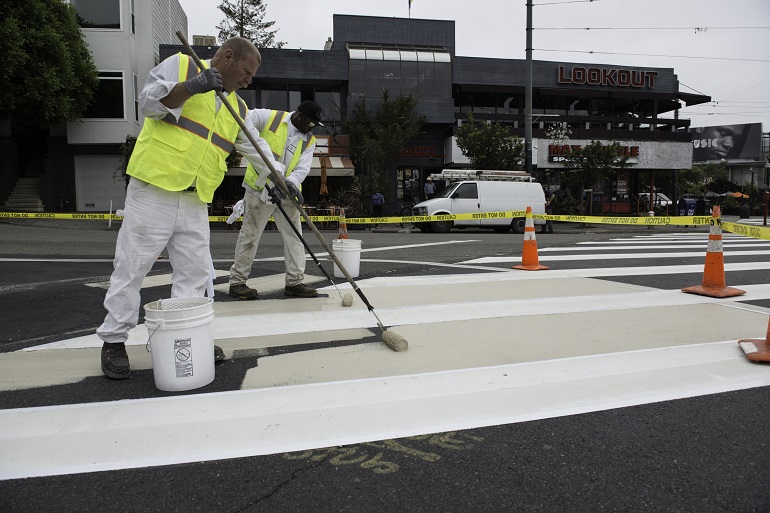As part of our Vision Zero efforts, crews have installed more visible crosswalks and other safety improvements across the city.
In the 24th month of our goal of completing 24 Vision Zero projects in 24 months, we’ve completed 30, as Mayor Ed Lee announced this week.
We know that we must continue to do more to achieve Vision Zero, our city’s goal to eliminate traffic deaths by 2024. Our city’s progress over the past two years reflects the start of a higher standard.
The list of 30 Vision Zero improvement projects can be found in this PDF.
The 30th set of safety improvements were completed in the Excelsior at the Persia Triangle. At the intersection of Persia Street, Mission Street and Ocean Avenue, new sidewalk bulb-outs and better street lighting have made pedestrian crossings safer.
Here are the other five additional Vision Zero improvements completed since November:
- Safer signal timing at the top 20 intersections with broadside collision injuries.
- Red curb zones for visibility (daylighting), safer signal timing and bicycle safety measures at the intersections on Polk Street between McAllister and Union streets.
- Signal timing changes and continental crosswalks at Ocean/Plymouth and Ocean/Miramar and a new crossing signal at Geneva/Cayuga.
- Continental crosswalks at Kearny and Sacramento, and continental crosswalks and a leading signal pedestrian interval at Kearny and Geary.
- Buffered bike lane, continental crosswalks, painted safety zones, advanced stop lines and leading pedestrian signal intervals at Howard Street between 4th and 10th streets.
Moving forward, expect to see more as we and our partner agencies continue to increase the focus on Vision Zero. In the next year, more than 13 miles of San Francisco streets will see safety improvements, with major work getting underway on high-priority streets like 2nd Street, Polk and Masonic Avenue.
Installing more of these kinds of measures on San Francisco’s High-Injury Network – the 12 percent of city streets that see 70 percent of traffic crashes – is essential to making our streets safer places to be. By spreading the word, pledging safer behavior, and holding us accountable to our goals, you help make Vision Zero possible.
